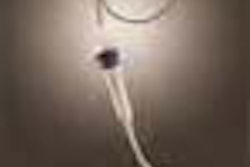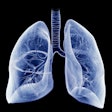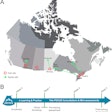Duplex Doppler sonography is a reliable and easily repeatable method of assessing cerebrodynamic change including shunt malfunction, according to Dr. Nitin Chaubal of the Jaslok Hospital in Mumbai, India, who presented a study of 28 hydrocephalic patients at the American Institute of Ultrasound in Medicine conference in April.
Hydrocephalus is one of the oldest and most common clinical conditions in childhood, with an incidence ranging from 2-15 per 10,000 live births. Rather than a single disease, it's actually a diverse group of conditions characterized by impaired circulation and absorption of cerebrospinal fluid. The resulting rise in intracranial pressure (ICP) is accompanied by reduced cerebral perfusion and ventricular dilatation. Left untreated, hydrocephalus can cause irreversible brain damage.
Displacement and stretching of the cerebral arteries resulting from higher ICP leads to increases in the pulsatility (PI) and resistive indices (RI), two relative measurements of cerebral vascular resistance, Chaubal said. Because increases in RI and PI correspond with clinical measurements of the severity of the disease, color Doppler ultrasound (CDUS) is a nearly ideal method of monitoring changes in ICP.
"Doppler variables such as PI and RI are related to blood flow. So a high index correlates with vasoconstriction of cerebral arteries ... and low flow velocity and a low index correlates with vasodilation of the cerebral arteries and high flow velocity," Chaubal said.
Building on earlier work that established the value of the resistive indices in gauging ICP (Childs Nerv Syst 1988 Jun;4(3):144-8), the Indian study sought to establish baseline values in Doppler RI, establish the relationship between the clinical findings in follow-up and evaluation, determine RI levels indicating a need for shunt insertion, and compare the effectiveness of ultrasound with MRI and CT.
Although the disease is common, "classic signs and symptoms are rare in infants, even in progressive hydrocephalus," Chaubal noted, On the other hand, "not all cases require surgical intervention," he said. While surgical shunting is effective in lowering ICP, successful long-term management depends on accurate monitoring.
Thus an accurate, reproducible method of monitoring cerebrospinal fluid pressure is essential for gauging the severity of the disease and the need for shunt implants, as well as evaluating whether they are working properly, Chaubal said. MRI has also been used for this purpose with some success, he noted, but its use has been limited by cost and availability.
The 28 patients, 12 males and 16 females aged 1 day to 10 years (including 22 infants and neonates) were diagnosed with hydrocephalus of various etiologies. The RI, PI, head circumference, and frontal horn radius were measured preoperatively in 12 patients, and also postoperatively in 16 patients by means of a pressure provocation test, Chaubal said.
RI of the anterior cerebral artery was measured in neonates and infants with anterior open fontanelle, while blood flow through the basal cerebral arteries was measured transcranially in the older patients. In addition, 28 normal children comprised a control group used to establish baseline measurements.
CDUS was performed to note ventricular dilatation and ventricle-to-parenchyma ratio, and to assess anomalies. CT and MRI studies were done to rule out questions raised by the ultrasound results. Following examination, 25 patients underwent surgical shunt implantation.
The researchers found that both PI and RI decreased with increasing ventricular dilatation: Mean RI for the control patients was 0.60, contrasted with 0.73 for the study group. Seven post-meningitis patients had the highest mean RI value, at 0.75. Also, Chaubal noted, "There is a tendency for the resistive indices to be highest in the younger age groups as compared to the older children."
After shunting RI, PI and frontal horn diameter all decreased (p < 0.001). Shunt malfunctions also increased RI significantly. The resistive indices also correlated very well with clinical findings, he said, especially with the frontal horn measurements. Chaubal noted that with the establishment of baseline index levels, CDUS is very effective in evaluating borderline hydrocephalic patients. Nevertheless, he concluded, no technique was perfect.
"Intracranial dynamics is very complex," Chaubal said. "No imaging technique gives us straightforward answers. The big heads cannot talk. We don't know what's happening inside, and under these circumstances, we feel we should use as many techniques as possible to find out what is happening ... and we feel that Doppler hydrocephalography gives us very useful information."
By Eric Barnes
AuntMinnie.com staff writer
May 2000
Related Reading
"Noninvasive cerebrospinal fluid shunt flow measurement by Doppler US using ultrasonically excited bubbles: a feasibility study," Ultrasound Med Biol 1999 Mar;25(3):371-89
"Transfontanellar Doppler ultrasound measurement of cerebral blood velocity before and after surgical treatment of hydrocephalus," Arq Neuropsiquiatr 1999 Sep;57(3B):827-35
Let AuntMinnie.com know what you think about this story.
Copyright © 2000 AuntMinnie.com

















